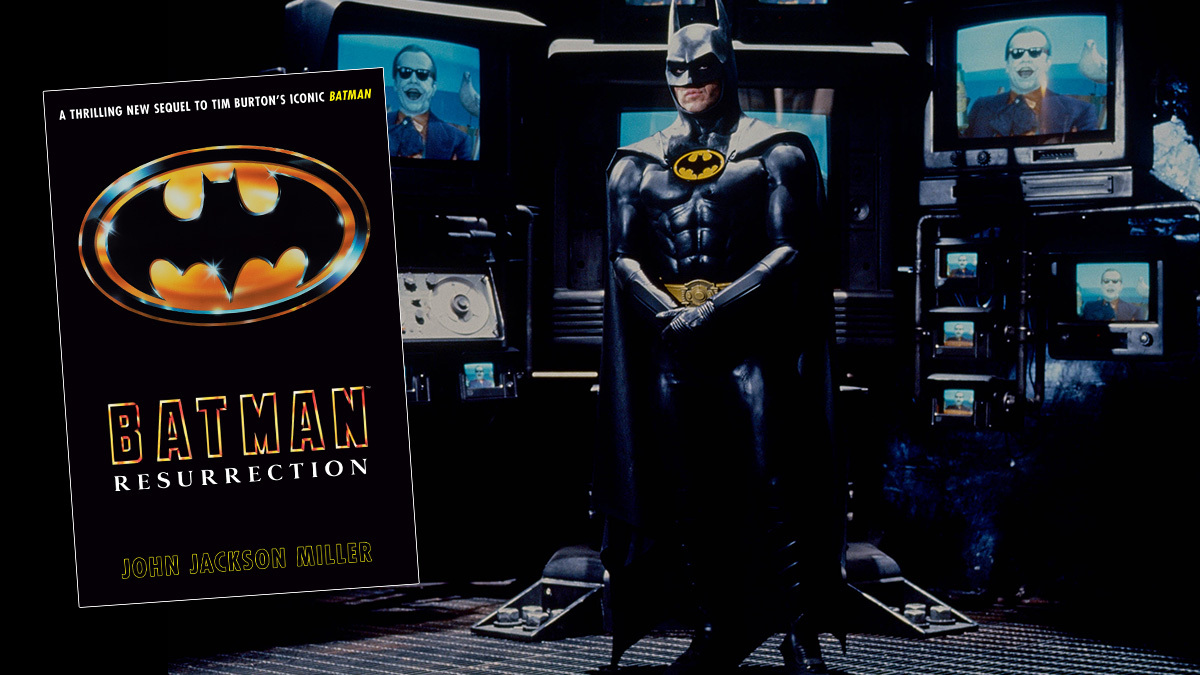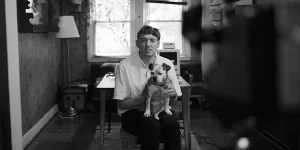
This article appears in the new issue of DEN OF GEEK magazine. You can read all of our magazine stories here.
John Jackson Miller watched 1989’s Batman 12 times in the theater. As a reviewer for his college paper, Miller went into the film with low expectations, burned by the poor adaptations of the past, but was thrilled to find a movie that reflected the richness of the comics he loved.
And yet, there was one nagging issue he couldn’t get over, one moment that just didn’t make sense, no matter how many times he revisited Batman.
“Hey, bat-brain, I was a kid when I killed your parents!” Joker says during his final confrontation with Batman, implying he knows Batman is the son of Thomas and Martha Wayne. Sure, Batman had just told Joker, “You made me first,” but nothing in the film suggests that Jack Napier would have any idea that Bruce Wayne is Batman.
“I wanted to explore that moment,” Miller tells Den of Geek magazine. “I don’t know if it’s a blown line or just a stub left over from one of the rewrites, but I’m going to take the line as it is and see where I can go with it.”
Such niggling questions helped Miller write Batman: Resurrection, a novel that explores the aftermath of Batman. Miller takes readers through a city still reeling from the Joker’s attack, now vulnerable to a new threat.
“I decided to deal with the question and come up with something where we have more than one meaning to the word ‘resurrection.’ I looked at the model for the Burton movies and borrowed the “Re” from Batman Returns for Batman: Resurrection,” he explains. “Exactly what or whom is being resurrected, we won’t say yet.”
However, Miller will reveal one person caught in the wake of Joker’s destruction: a frustrated actor who takes the name Basil Karlo and, after an encounter with Smylex-tainted make-up, transforms into Clayface, a grotesque shape-shifting monster from the comics.
“I wanted a protagonist/antagonist who fits the Tim Burton aesthetic,” Miller says of Clayface. “All of his characters are broken in some way, shape, or form. I took the Golden Age Clayface Basil Karlo and made him more sympathetic and tragic. I wanted to tie his tragedy to something from the first movie.”
Miller cites a line from legendary critic Gene Siskel’s review of Batman Returns as a guiding principle when making his version of Clayface. “He called it ‘an opera about loneliness.’ I thought that was wonderful because the movies are about lonely people versus people who have someone. They’re all on paths and colliding with one another, hoping to get to some position where they can be whole.”
Those collisions take readers into contact with characters who show up in later films and even with Batman ’89, the DC Comics series from Sam Hamm, screenwriter of the original Batman, and artist Joe Quinones.
“We can see how the Joker impacted everybody. We see what Max Shreck thought of the Joker; we see what Selina Kyle thought of the Joker. We can see the wreckage of what this guy did to the world.
“I wanted the book to show how Commissioner Gordon’s approach to police work has changed with this vigilante running around, how Harvey Dent has to charge criminals brought in by Batman, how business leaders like Shreck deal with Batman and the Joker. And I wanted to show what happened with Joker’s crew.”
Indeed, a surprising amount of Batman: Resurrection features Lawrence, the shades-wearing, boombox-carrying goon in the Joker’s entourage, as well as the wisecracking reporter Alexander Knox.
But, as much as the novel checks in with these other Gothamites, including a mastermind who reveals themselves late in the narrative, Miller assures readers that Batman: Resurrection is still a story about the Dark Knight.
“This is a mystery novel because Batman is the world’s greatest detective,” Miller explains, teasing that the book also turns the focus on Bruce’s psychology. Where villains fall into madness because of their loneliness, “Bruce is saved largely because he has Alfred there as a good mentor who guides him.”
Thanks to this focus, Miller doesn’t worry as much about the incredible expectations that greet Batman: Resurrection in 2024, a year in which even casual audiences know the minutiae of lore. While the book is a sequel to the film, it exists in its own pocket universe.
“I hope that people will come to this as an Elseworlds story inspired by these films, but nothing we do here will constrain anyone from doing something else down the line.”
So if a Batman: Resurrection reader doesn’t understand how a line from the novel fits, they shouldn’t worry about it. Or, they could think about the line for decades and use it to launch their own amazing story, just like Miller did.
Batman: Resurrection is available in bookstores now.
The post Batman: Resurrection Is a Batman ’89 Sequel That Explores a City Still Haunted by the Joker appeared first on Den of Geek.









